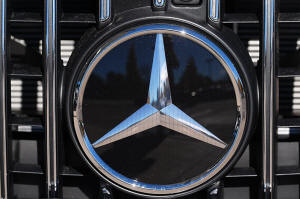|
Mercedes-Benz agrees to pay $149.6
million to settle multistate emissions allegations
[December 23, 2025]
By TODD RICHMOND
MADISON,
Wis. (AP) — Mercedes-Benz USA and parent company Daimer AG have agreed
to pay $149.6 million to settle allegations that the automaker secretly
installed devices in hundreds of thousands of vehicles to pass emission
tests, a coalition of attorneys general announced Monday. |

The company logo is shown on the grille of an unsold 2026 AMG S63
Performance model on the lot of a Mercedes Benz dealership Nov. 2, 2025,
in Littleton, Colo. (AP Photo/David Zalubowski, File) |
|
According to the coalition, between 2008 and 2016 the German
automaker equipped more than 211,000 diesel passenger cars and
vans with software devices that optimized emission controls
during tests but reduced the controls during normal operations.
The devices enabled vehicles to far exceed legal limits for
nitrogen oxides, a pollutant that can cause respiratory
illnesses and contributes to smog.
The states alleged that Mercedes installed the devices because
it couldn’t reach design and performance goals such as fuel
efficiency while complying with emissions standards. The
automaker allegedly concealed the devices from state and federal
regulators and the public while marketing the vehicles as
“environmentally friendly” and compliant with emissions
standards.
The agreement is still subject to court approval.
Daimler AG and Mercedes-Benz USA already agreed in 2020 to pay
$1.5 billion to the U.S. government and California state
regulators to resolve the emissions cheating allegations.
Mercedes-Benz issued a statement saying the deal announced
Monday will resolve all remaining legal proceedings tied to
diesel emissions in the United States, but the company still
considers the accusations unfounded and denies any liability.
The automaker has made “sufficient provisions” for the cost of
the settlement, the statement said.
Fifty attorneys general, including the attorneys general of the
District of Columbia and Puerto Rico, made up the coalition
announced Monday. California was not part of the group.
The settlement calls for the automaker to pay the attorneys
general $120 million with another $29 million payment suspended
and potentially waived pending completion of a consumer relief
program.
That effort will extend to the roughly 40,000 vehicles with the
devices that hadn't been repaired or permanently removed from
the road by Aug. 1, 2023. The owners of those vehicles would get
$2,000 per vehicle if they install approved emissions
modification software and an extended warranty.
The settlement also calls for Mercedes to comply with reporting
requirements and refrain from any further unfair or deceptive
marketing or sale of diesel vehicles.
Volkswagen also ended up paying $2.8 billion to settle a
criminal case due to emissions cheating.
All contents © copyright 2025 Associated Press. All rights reserved

|
|
|




